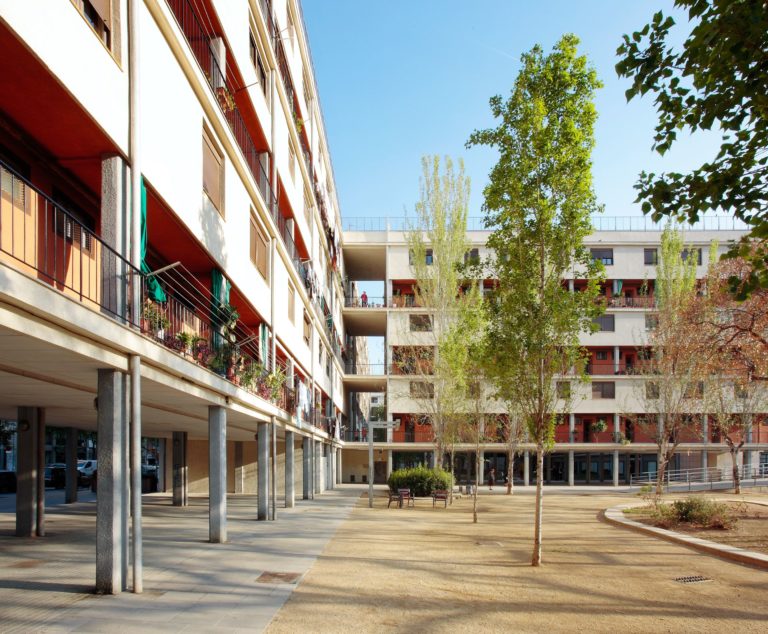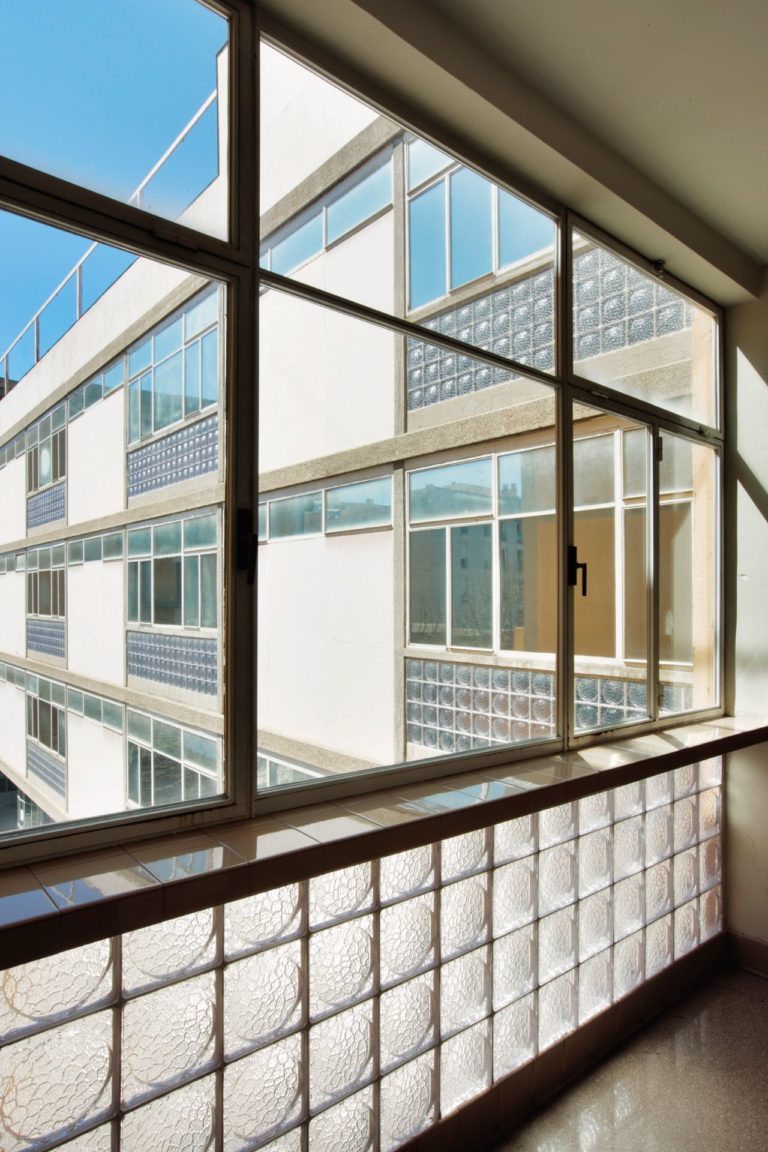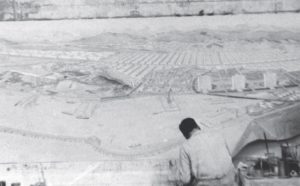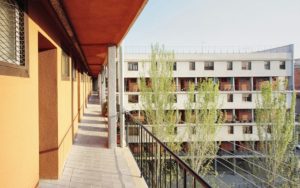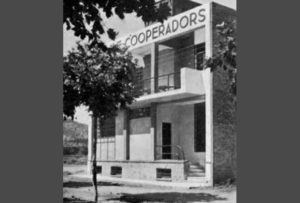Josep Torres Clavé
Barcelona, 1906-Els Omellons (Lérida), 1939
Josep Torres Clavé came from a wealthy family with ties to the construction sector over two generations. His grandfather, Josep Torres Ferran, founded the company Fomento de Obras y Construcciones (1900) together with Salvador Piera Jané and Narcís Cortina Batllori. His father, Raimon Torres Grau, and his uncle Jaume studied at the Barcelona School of Architecture, graduating in 1902 and 1903, respectively. Josep was the firstborn son from Raimon Torres Grau’s marriage to Rosa Clavé Carbó; he was followed by siblings Rosa, Raimunda and Raimon. Starting in 1909, Raimon senior managed the family company, and his brother Jaume continued developing his career as an architect. Jaume achieved considerable recognition and, beginning in 1914, he helped oversee young Josep’s education after he was orphaned.
Torres Clavé attended secondary school at the Piarist School on carrer Diputació in Barcelona (1917-1922), combining his studies with work in his uncle’s studio, where he also received artistic training from the painter and draftsman Francesc Canyelles. At the age of 15, he joined the Cercle Artístic de Sant Lluc, furthering his studies of drawing, especially nudes, and painting. In 1923, he entered the Barcelona School of Architecture, where he became friends with Josep Lluís Sert, who sparked his interest in modern architecture through his admiration for Le Corbusier and the reading of his texts. Of particular importance was a trip Torres Clavé took to Italy with Sert and Sixte Illescas in the summer of 1927 to study the great masters of painting. Upon their return, he decided to dedicate his efforts entirely to architecture.
He participated, with Sert, in the competition for architecture students organized by the Architects’ Association in 1928 (Hotel on the beach, with the collaboration of Subirana) and, in April 1929, in the exhibition Arquitectura Nueva at the Dalmau Galleries (summer resort on the Mediterranean coast). Shortly thereafter, on 26 August 1929, he obtained his degree in architecture.
After marrying Mercè Torres Tort, in February 1930, the second daughter of his uncle Jaume, he moved into a flat in the building at carrer Casp 92, a project he collaborated on and for which he designed a good part of the furniture.
On 25-26 October 1930, he was at the founding meeting of the GATEPAC in Zaragoza, and on 6 December he participated in the founding of the GATCPAC, where he was put in charge of editing the group’s magazine, AC: Documentos de Actividad Contemporánea (1931-1937). He continued in the role until the final issue, also designing some issues that were never published.
At the end of 1931, he left his uncle’s studio to join forces with Sert, and they set up their headquarters on the top floor of the building at carrer Muntaner 342-348, the López House. From 1932 to 1936, their professional association was expanded with the addition of Subirana. In that context, Torres participated in the formulation and constructive development of the team’s most important projects, often inseparable from the activity of the GATCPAC. These included the experimental housing for workers on Passeig Torres i Bages (1932), the Casa Bloc (1933-1939), the anti-tuberculosis dispensary (1933-1937), the Ciutat de Repòs i Vacances [City of Rest and Holidays], the Macià Plan (1932-1934), for which he also made the famous diorama, the weekend houses in the Garraf (1934-1935), the moveable children’s library, the projects for a 100-bed regional hospital, the Barracks for an infantry unit (1934), the Cooperatives’ Union in Gavà (1934-1936), and the project for a 400-bed anti-tuberculosis hospital in Vall d’Hebron (1936). They were accompanied by other commissions with just Subirana for the renovations of the hospitals in Palafrugell, Vielha, Badalona, Igualalda, Manresa and Vic and the design for a 100-bed hospital for La Seu d’Urgell and Berga (1934). In this period, on his own, Torres Clavé also completed the designs for a Faculty of Medicine and University Dispensary (1934) and for the Grupo Marcelino Domingo Municipal School in Reus (1936). In 1935, he was among the founders of the company Mobles i Decoració de la Vivenda Actual (MIDVA), which was meant to market the GATCPAC’s designs.
Starting in July 1936, Torres Clavé took on a key role in the organization of the new revolutionary structures in the field of architecture, considering it an opportunity to implement the changes pursued by the GATCPAC. On 31 July 1936, he was among the nine founders of the Architects’ Union of Catalonia (SAC); he was named general secretary of the union shortly thereafter. He was actively involved in the control of construction companies, in the unionization of the architectural profession, and in the activation of public projects in order to guarantee work for the construction sector. As a representative of the SAC, he was also part of the Urbanization and Works Commission for the City Council, promoting the sanitation plan for District V (Barri Xino) and the extension of the Gran Via to Castelldefels as key infrastructures for the development of the Ciutat de Repòs i Vacances [City of Rest and Holidays]. Later, he also joined the Committee for the Joint Commission and Control of Urban Property.
In August 1936, he was appointed Delegate Commissioner for the Generalitat at the School of Architecture and, in April 1938, director of the school. In the context of the New Unified School Council (CENU), he wrote a proposal for an Architecture Teaching Plan (1937) for the purpose of training modern professionals through pedagogy centred on design and construction, complemented by progressive specialization in areas such as urban planning, construction management, oversight, heritage conservation and interiors.
During the Spanish Civil War he was often called upon to supervise defence works on the front, and in the autumn of 1938 he joined the ranks. He was killed in an air assault during the retreat of the Republican army in the town of Els Omellons, on 12 January 1939.
Biography by Paolo Sustersic
Bibliography
- GRANELL, Enric, RAMON, Antoni, Col·legi d’Arquitectes de Catalunya, 1874-1962, Col·legi d’Arquitectes de Catalunya, Barcelona, 2012.
- PIZZA, Antonio, ROVIRA, Josep M., eds., GATCPAC. Una nueva arquitectura para una nueva ciudad, Museu d’Història de la Ciutat de Barcelona; Col·legi d’Arquitectes de Catalunya, Barcelona, 2006.
- LANDROVE, Susana, ed., El G.A.T.C.P.A.C. y su tiempo: política, cultura y arquitectura en los años treinta [actas V Congreso Fundación DOCOMOMO Ibérico, Barcelona (26-29/10/2005) Fundación Docomomo Ibérico, Fundación DOCOMOMO Ibérico, Barcelona, 2006.
- AC: documentos de actividad contemporánea, Reimpresión de la revista AC, 1931-1937, Fundación Caja de Arquitectos, Barcelona, 2005.
- TORRES, Raimon, OLIVERAS, Jordi, Josep Torres Clavé, Santa & Cole, Barcelona, 1994.
- PIZZA, Antonio. Dispensario antituberculoso de Barcelona, 1933-1937: J.Ll. Sert, J.B. Subirana y J. Torres Clavé, Colegio de Arquitectos de Almería, Almería, 1993.
- “Josep Torres Clavé, arquitecto revolucionario”, in 2C construcción de la Ciudad 15-16, 1980.
- “Homenatge a J. Torres Clavé 1”, in Cuadernos de arquitectura y urbanismo 140, 1980.
- “Homenatge a J. Torres Clavé 2”, in Cuadernos de arquitectura y urbanismo 141, 1980.
- OLIVERAS I SAMITIER, Jordi, “Architecttura e rivoluzione in Catalogna: dal GATCPAC al SAC /Architecture and revolution in Catalonia: from the GATCPAC to the SAC”, in Lotus 23, 1979, pp. 40-48.
- GIMÉNEZ VALVERDE, José M., “Ha caído otro gran antifacista”, in Las noticias. Barcelona, 18-1-1939.
- “Ha muerto el arquitecto Torres Clavé”, in Solidaridad Obrera, Barcelona, 15-1-1939.
- “El arquitecto Josep Torres Clavé ha muerto”, in La Vanguardia. Barcelona, 15-1-1939.
- “L’enterrament de Josep Torres Clavé”, in Treball, Barcelona, 15-1-1939.
- “L’ arquitecte Josep Torres Clavé ha mort víctima de la metralla estrangera”, inTreball. Barcelona, 14-1-1939.
- “Josep Torres Clavé”, in La Humanitat. Barcelona, 14-1-1939.
Writings by J. Torres Clavé
- TORRES CLAVE, Josep, “Cas d’application: villes”, in Congrés International d’Architecture Moderne (CIAM), Rapport n. 2 a 5 “Loisirs”, Paris, 28-6 al 2-07-1937.
- TORRES CLAVÉ, Josep, “Problemes de la revolució”, in AC: Documentos de Actividad Contemporánea 25, 1937.
- TORRES CLAVÉ, Josep, “La transformació del concepte de l’estatge”, in Nova Ibèria, Barcelona, febrero de 1937.
- TORRES CLAVÉ, Josep, “La missió social de l’arquitecte”, in Arquitectura i Urbanisme 14, Barcelona, octubre de 1936.
- TORRES CLAVÉ, Josep, “Urbanisme. Resum d’una conferència donada al’assocoació d’Arquitectes de Catalunya el 9-6-1936”, in Arquitectura i Urbanisme 13, Barcelona, agosto de 1936.
- TORRES CLAVÉ, Josep, “L’organització col·lectiva de l’habitació. Conferència donada en ecentre Catalanista d’Esquerra el 13-5-1936”, in Arquitectura i Urbanisme 12, Barcelona, June 1936.
- TORRES CLAVÉ, Josep, “Els nous procediments de l’urbanisme actual”, in Higia 18, Barcelona, June 1936, pp. 24-26.
- SERT, Josep Lluís, TORRES CLAVÉ, Josep, “Casas de fin de semana”, in Nuestra arquitectura 5, Buenos Aires, May 1936.
- ILLESCAS, Sixt, TORRES CLAVÉ, Josep, TORRES CLAVÉ, Josep Lluís, “Respuesta a la encuesta ‘Qué penseu de l’arquitectura moderna?’”, in Mirador, Barcelona, 3-4-1930, 10-04-1930, 24-04-1930.
